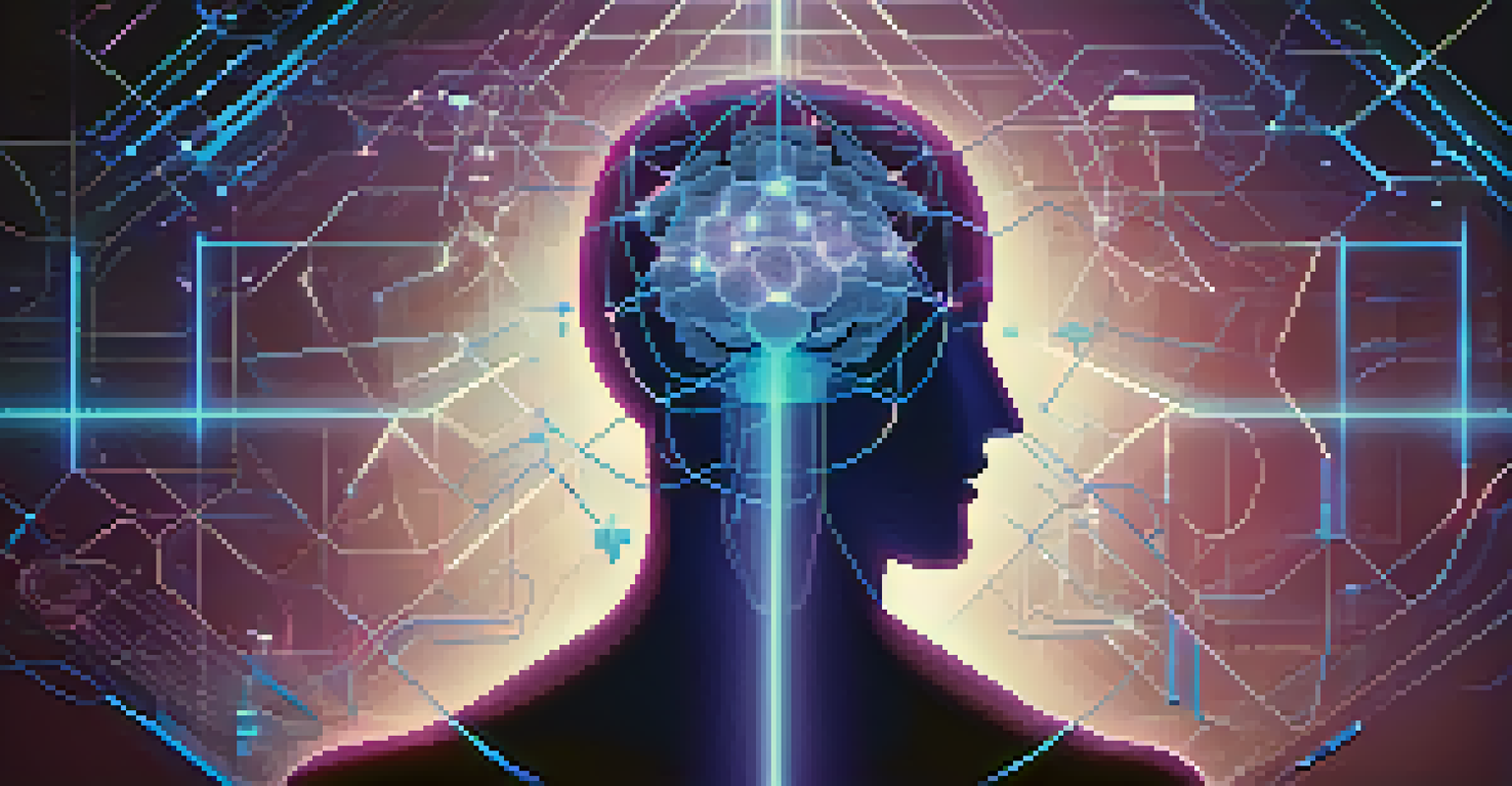AI as a Tool for Critical Thinking Development in Students

Understanding Critical Thinking in Education
Critical thinking is the ability to analyze information, evaluate arguments, and make reasoned decisions. In today's fast-paced world, these skills are more important than ever for students to navigate complex problems. By fostering critical thinking, educators prepare students not just for exams, but for real-world challenges.
The ability to think critically is the key to success in a rapidly changing world.
This skill set empowers students to question assumptions and approach problems from multiple angles. Think of it as a mental toolkit that helps them dissect issues and arrive at well-supported conclusions. As we look at the role of AI in education, it's essential to understand how it can enhance this vital skill.
By integrating AI into learning environments, we can create interactive experiences that engage students in critical thinking. AI tools can simulate real-life scenarios, prompting students to evaluate options and consider consequences, thereby sharpening their analytical skills.
AI Tools: A New Approach to Learning
AI tools, such as intelligent tutoring systems and adaptive learning platforms, offer personalized educational experiences. These technologies assess individual student performance and adapt content to meet their unique learning needs. This customization helps students engage more deeply with material and encourages independent thinking.

Imagine a student struggling with a math concept. An AI-driven platform can identify their weaknesses and provide targeted exercises to strengthen those areas. By working through these tailored challenges, students build confidence in their abilities while honing their critical thinking skills.
Critical Thinking Enhances Learning
Fostering critical thinking equips students to analyze information and solve real-world problems effectively.
Moreover, these tools can provide instant feedback, allowing students to reflect on their reasoning and make adjustments in real-time. This immediate response fosters a growth mindset, where students learn to view mistakes as opportunities for improvement rather than setbacks.
Enhancing Collaborative Learning with AI
AI can also facilitate collaborative learning experiences that encourage critical thinking. Through platforms that support group work, students can engage in discussions, share ideas, and challenge one another's perspectives. This interaction is crucial for developing higher-order thinking skills.
Creativity is thinking up new things. Innovation is doing new things.
For instance, AI-powered discussion forums can analyze conversation threads and highlight key points or questions that require deeper exploration. This promotes a culture of inquiry, where students learn to approach problems collectively and consider diverse viewpoints.
By leveraging AI in group settings, students can practice articulating their thoughts and defending their opinions. This not only refines their critical thinking skills but also prepares them for future teamwork and collaboration in their careers.
Fostering Creativity Through AI Integration
Critical thinking and creativity often go hand in hand; one enhances the other. AI tools can inspire creativity by offering students new ways to explore ideas and solve problems. For instance, AI can generate prompts or scenarios that challenge students to think outside the box.
Consider a creative project where students use AI-generated data to develop solutions for real-world issues. This combination of analytical thinking and innovative problem-solving encourages students to approach challenges with a fresh perspective.
AI Personalizes Education Experience
AI tools offer tailored learning experiences that adapt to individual student needs, enhancing engagement and independent thinking.
Additionally, AI can help students visualize concepts through simulations or interactive models, making complex ideas more accessible. This hands-on engagement not only stimulates creativity but also reinforces critical thinking by allowing students to experiment and iterate.
Preparing Students for Future Challenges
Incorporating AI into education equips students with skills that are increasingly relevant in today's job market. As technology evolves, so does the demand for critical thinkers who can adapt and innovate. Students who master these skills will be better prepared for future challenges.
For instance, industries such as healthcare, finance, and technology require professionals who can assess situations critically and make informed decisions. By using AI as a tool for developing critical thinking, educators are paving the way for students to thrive in these dynamic fields.
Moreover, critical thinking skills foster resilience and adaptability, qualities that are essential in an ever-changing world. Students who excel in these areas are more likely to navigate uncertainties and tackle complex problems with confidence.
AI Ethics: A Critical Thinking Perspective
As we embrace AI in education, it's vital to instill a sense of ethical responsibility in students. Understanding the implications of AI and its impact on society is a crucial aspect of critical thinking. Students must learn to question the ethical dimensions of technology and its use.
For example, discussions around data privacy, algorithmic bias, and the role of AI in decision-making can prompt students to critically evaluate the tools they use. This not only cultivates their analytical skills but also encourages them to consider the broader societal implications of their actions.
Ethics in AI is Essential for Students
Integrating discussions about AI ethics helps students develop a holistic view of technology and its societal implications.
By addressing these ethical considerations, educators can guide students in developing a holistic view of technology. This approach reinforces the idea that critical thinking is not just about solving problems but also about understanding the consequences of those solutions.
The Future of AI in Education and Critical Thinking
Looking ahead, the integration of AI in education is likely to expand, offering new opportunities for developing critical thinking. As technology continues to advance, educators will need to adapt their teaching methods to leverage these tools effectively. This ensures that students remain engaged and challenged.
AI can facilitate a more interactive and immersive learning environment, where students are actively involved in their education. As they engage with AI tools, they'll have the chance to explore complex ideas and develop their critical thinking skills in meaningful ways.

Ultimately, the goal is to create a generation of learners who are not only knowledgeable but also equipped to think critically and creatively. By embracing AI as an educational ally, we can foster a future where students are prepared to lead and innovate in an increasingly complex world.